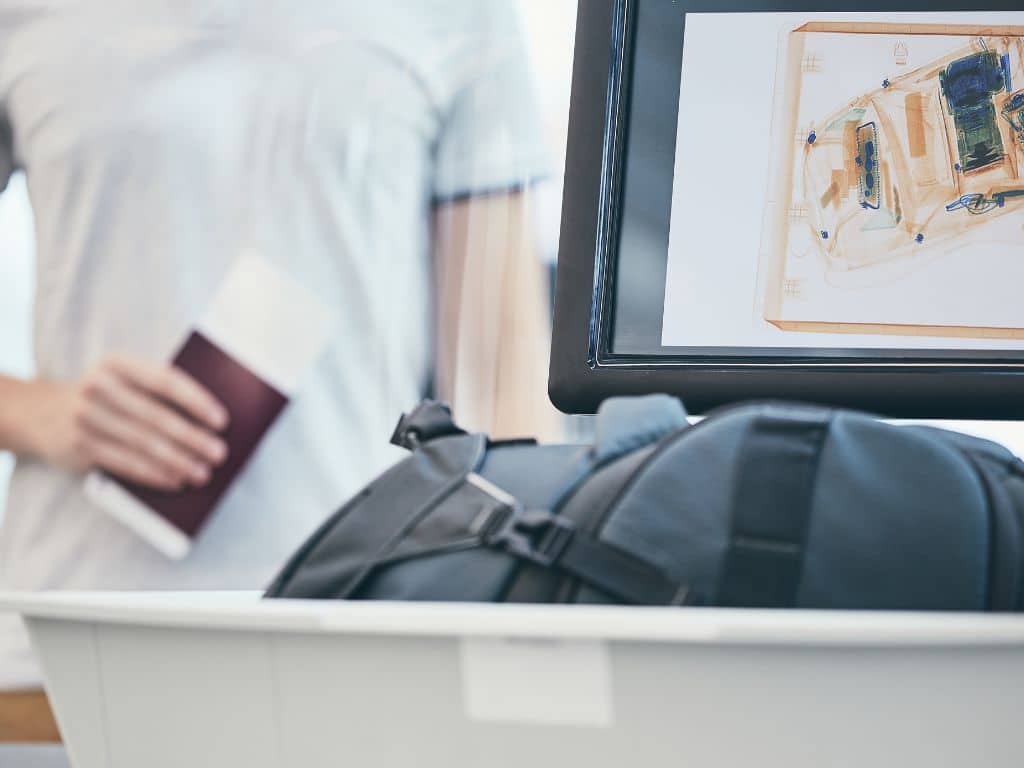
There are countless online articles out there offering tips on what to pack for your next holiday, we ourselves have offered up a number of such posts on our travel blog. But what about those items you shouldn’t pack or take on a plane.
There are many items that are prohibited from being brought on flights including dangerous goods and various “nuisance” items, as well as there being restrictions on things like batteries and liquids. Some items can only be placed in checked baggage while others are only permitted in your carry-on.
To clear up any confusion you may have about what you can’t take on a flight, we’ve outlined below a list of items that are either prohibited or restricted to ensure the safety of the plane and everyone onboard. We’ll also cover items that may not be prohibited but that you should still probably leave at home.
One thing that definitely is allowed on any flight whether you’re flying domestically or internationally is comprehensive travel insurance and the best part is it won’t take up any space in either your checked baggage or carry-on despite the enormous amount of protections it can offer you during your travels.
Dangerous goods
There are a number of dangerous goods that are either completely banned from luggage or restricted to just being allowed in checked baggage or carry-on. And some dangerous goods may only be allowed to be carried by certain passengers if they adhere to specific conditions and rules.
Generally, anything that could be considered dangerous to others onboard or could put the plane itself in danger during flight won’t be allowed in your carry-on. Even when certain dangerous items are allowed onboard, whether it’s in checked or carry-on luggage, they may require special packing procedures.
Dangerous items not allowed in carry-on baggage include anything that could be used as a weapon, sharp objects, and flammable materials or substances. That means no knives, firearms, cricket bats, golf clubs, ski poles, power and hand tools, mace or pepper spray, tasers, organic peroxides, solvents, or poisons.
Things like nail clippers, small scissors, multi tools, disposable razors are often allowed but not always. Restrictions on items often vary between countries and even between states or territories within countries, so if you are ever questioning whether an item is allowed, your best bet is simply to not pack it unless you want to do the research in finding a sure answer.
Items like knives and even firearms and ammunition can be packed in checked baggage, but knives will need to be packed securely with blades protected, and unloaded firearms will require a specific travel case such as a locked hard-sided container. If you’re planning on packing a knife or firearm in checked baggage, you will need to likely declare this when checking your bag in at the airline counter.
Note that knives or firearms that are often illegal under federal law in most countries such as switchblades, spring-loaded knives, and semi-automatic or pump-action shotguns will never be allowed in any baggage and could get you in a lot of trouble.
It’s easy to purchase souvenirs abroad that may be legal in that country but may not be allowed on flights or back here in Australia, so be wary of buying questionable items. As we said, rules and regulations vary between countries so you will have to find specific information regarding your chose travel destinations when considering travelling with potentially dangerous goods.
For all you outdoor lovers, camping stoves can usually be packed in checked baggage so long as they have been flushed and have no traces of fuel, but butane or propane canisters will are not permitted.
Some more unusual items that may be banned from carry-on luggage or any luggage include party-poppers and Christmas crackers, bear spray, various photographic or art supplies, and CO2 cartridges. Remember that failure to declare what may be dangerous goods may result in prosecution and fines.
When it comes to batteries and power banks, they are allowed on flights with restrictions. They must be placed in carry-on baggage and there may be limits in regards to the quantity you are allowed or being under 160Wh in the case of lithium ion batteries.
Lighters and matches
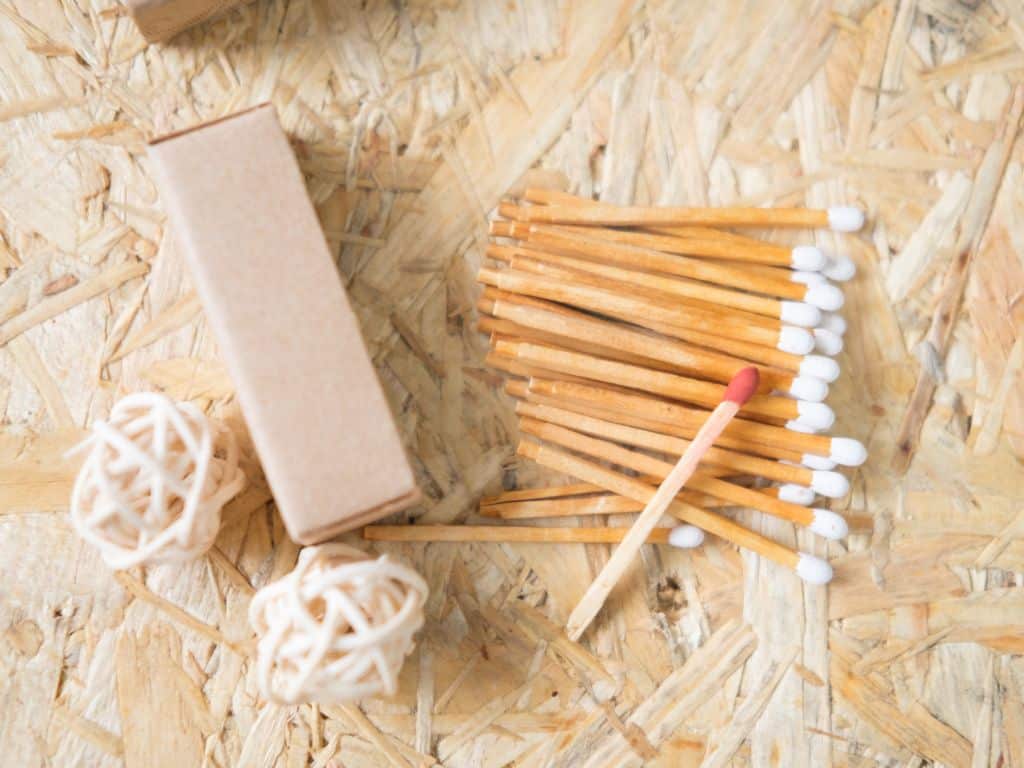
We all know that smoking is not allowed on aircraft at any time and this applies to traditional cigarettes as well as e-cigarettes and vaping devices. Surprisingly, however, safety matches and certain lighters are often allowed onboard without prior approval.
The restriction is that you most often are required to keep safety matches or a personal lighter on your physical self while flying and you are usually limited to a single lighter or box of matches. They are almost never allowed to be packed in either carry-on or checked baggage.
Note that strike-anywhere matches, blue flame lighters, torch lighters, and similar others are generally prohibited from being carried onboard, so if you must take a lighter or matches make sure your brand or model is allowed.
E-cigarettes and personal vaping devices must be packed in your carry-on only, since they are not allowed in checked baggage.
Nuisance items
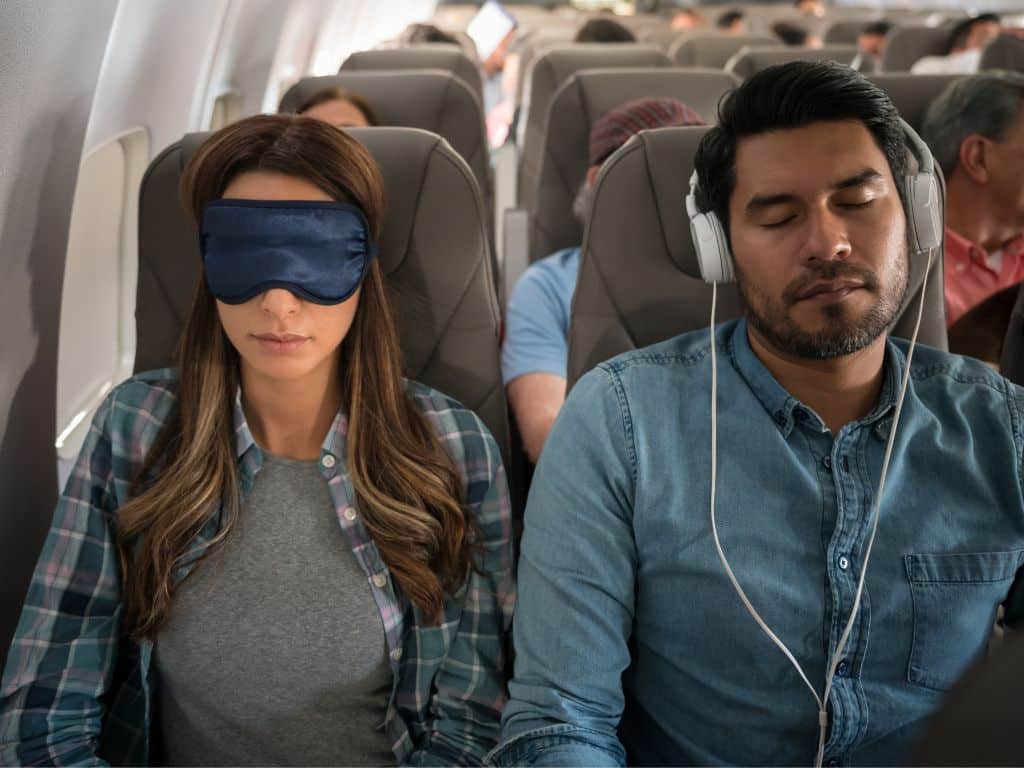
There are then those items that aren’t really dangerous per se, but can be a nuisance to crew or other passengers. Some airlines may choose to ban certain items considered to be a nuisance while others may allow them.
So what are nuisance items you should generally try to avoid packing in your carry-on? Devices that prevent other passengers from fully reclining their seat, leg hammocks, seat dividers, products that attach to airline seats, small inflatable beds for kids, and any other product designed for travel comfort that may block seat rows or aisles.
Just because you may see a clever product online designed for making flights more comfortable doesn’t mean it will be allowed by all airlines. The larger and more elaborate the product, the likelihood it won’t be allowed, so maybe just stick to a simple travel neck pillow.
Other things not allowed on aircraft include skateboards, scooters, and hoverboards. And while maybe not banned, try to avoid items that make a lot of noise such as certain children’s toys so as to not disturb others.
Try to think about other passengers when you pack your carry-on and maybe refrain from packing or at least using certain items during flight. This includes items like strong perfumes or nail polish that can trigger someone’s allergies. It also means not using nail clippers to do a bit of in-flight personal grooming.
Certain Food
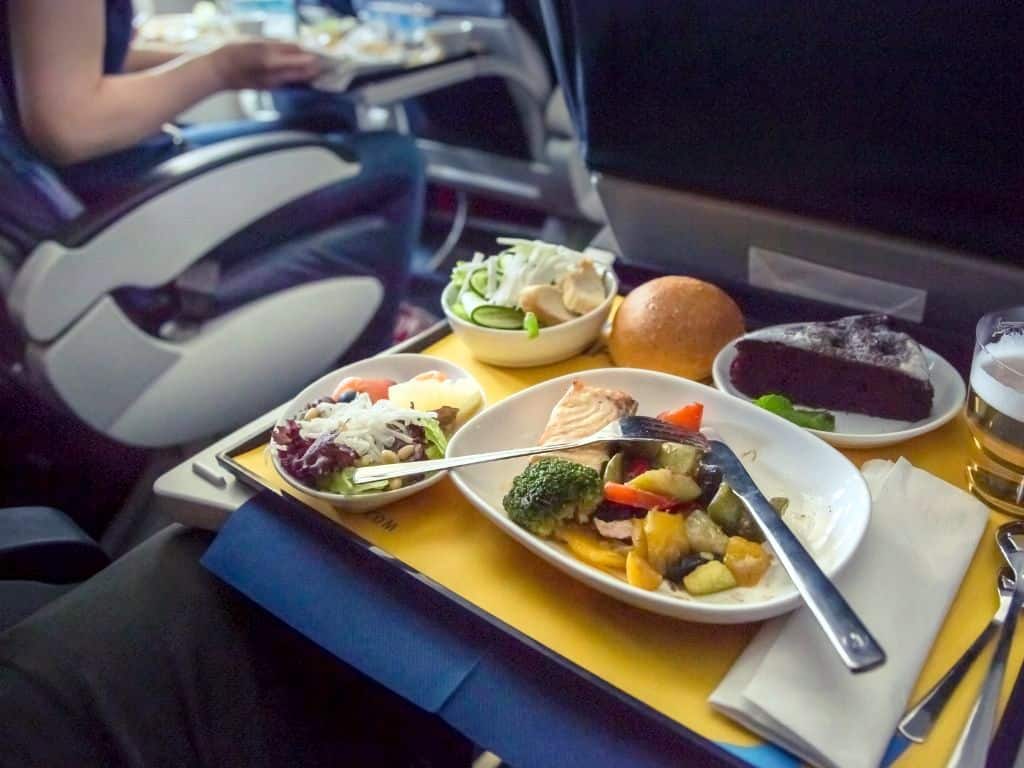
Many people bring food onboard and most foods are allowed but that doesn’t necessarily mean you should bring certain foods onboard. Try to be mindful of other passengers and any allergies they may have, especially when it comes to those with common severe allergies like peanut allergies.
Avoid bringing pungent foods, food that are loud to eat (crunchy), or messy and sticky foods that may leave traces behind in your seat, on your tray table, or on other surfaces like the seatbelt and in-flight entertainment screens.
The main point is to be courteous when travelling with food. Note that some people become more sensitive to strong smells on planes, partially because it’s a rather enclosed space but also because things like anxiety and motion sickness can increase their sensitivity.
Keep in mind when travelling internationally that the majority of countries have biosecurity restrictions when it comes to introducing various food items. Even domestic travel within Australia between certain states will have quarantine restrictions when it comes to certain produce, so avoid brining restricted foods with you. If unsure, at the very least remember to declare any food items when going through customs to avoid potential confiscation or penalties.
Liquids, aerosols, gels, and powders
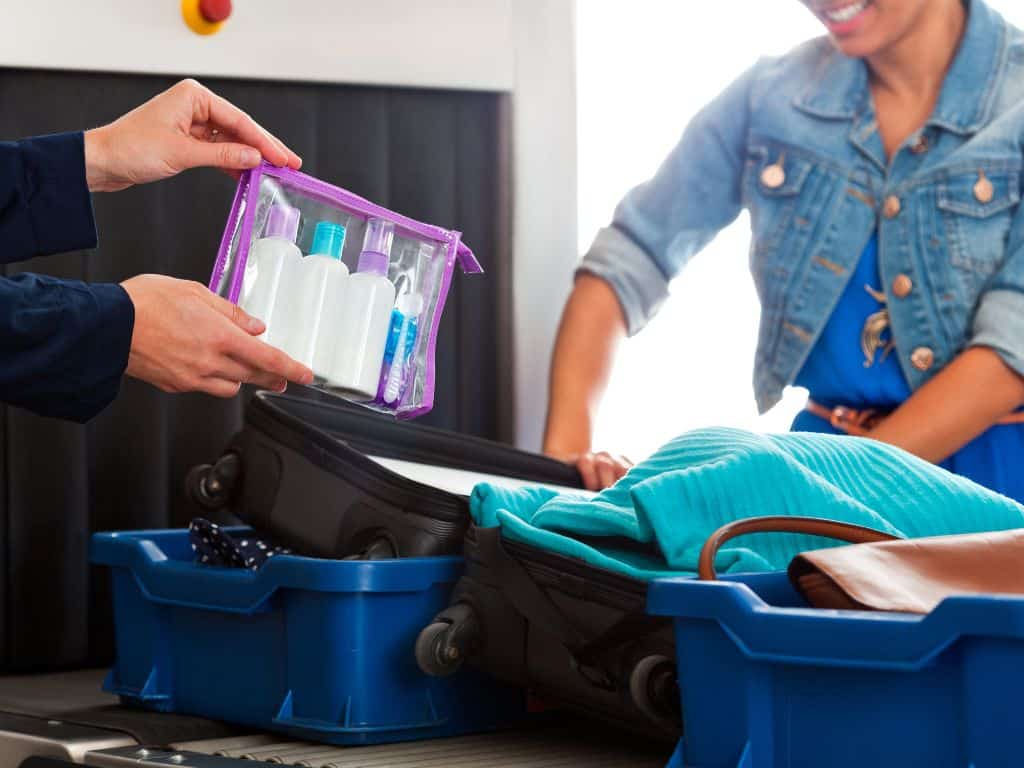
While you can pack liquids, aerosols, gels, and powders, there can be restrictions on what is allowed in your carry-on in terms of sizes or amounts.
Domestic flights within Australia do not restrict the quantity of liquids, aerosols, gels, and powders you can carry onboard so long as you are not departing from an international terminal. If you are departing from an international terminal, then you will be required to adhere to the same restrictions that are in place when travelling abroad.
To make things simple, pack larger sized toiletries and other liquids, aerosol, gels, etc, in your checked baggage and opt for special travel-sized items if you need to place them in your carry-on.
When in place, the limits for liquids, aerosols, and gels is 100ml (100g) or less and all items must be placed in a transparent, resealable plastic bag. When it comes to powders, you are allowed to pack in your carry-on inorganic powders that do not exceed 350 millilitres or 350 grams in total volume of all products.
An important tip to remember is that the quantity restrictions is calculated on the total container size volume and not how much actual product is left in the container.
Other items to avoid bringing or using on a plane
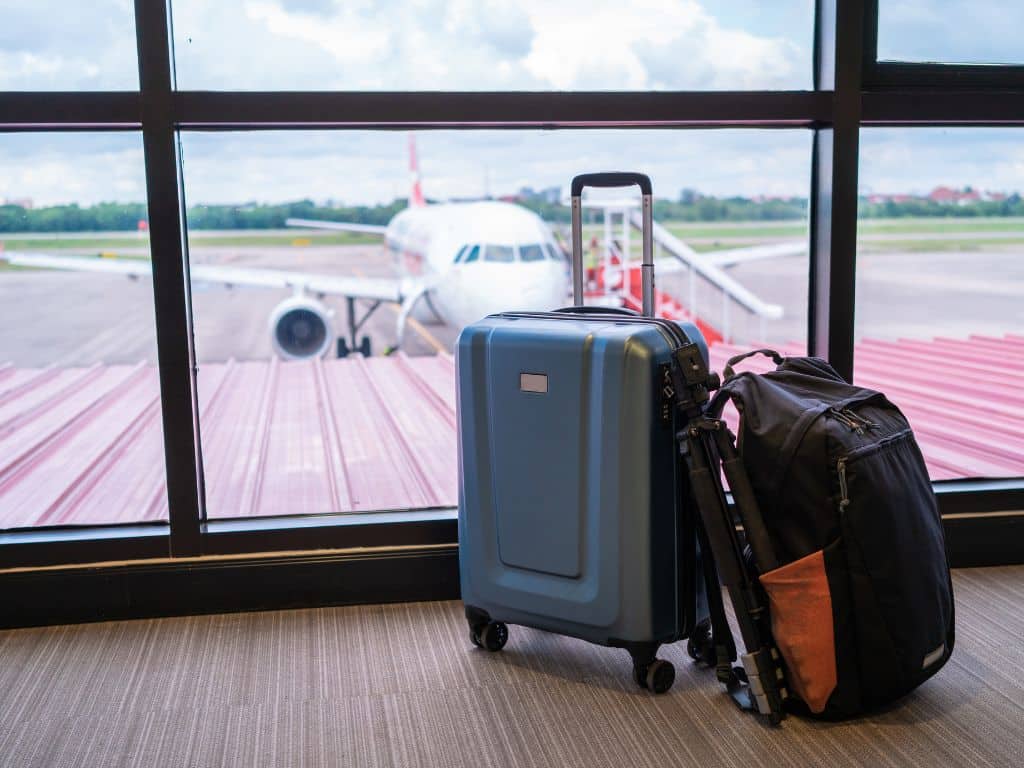
There are then those items that you should simply avoid using on planes. Things like board games with many small pieces, jigsaw puzzles, or messy items like glitter. The likelihood of losing small items is quite high on planes and the ability to go searching in and under seats and down aisles of a plane is not really feasible.
You want to leave your plane seat how you would like to find it. And while cleaning can take place in-between flights, things can get missed so it’s polite to consider others travellers both on your flight and future flights when bringing or using any item onboard.
Another thing you will want to avoid for your own comfort is wearing a brand new pair of shoes that have not been broken in yet or any other tight-fitting footwear. Leg and foot swelling is often common among air passengers due to inactivity during flight. A new pair of shoes or tight footwear is already putting you at greater risk for blisters and sore feet, only exacerbated by the potential swelling during flights.
Wearing high heels should also be avoided because they can be a safety hazard for you and others, especially in emergency situations. Turbulence can cause you to lose your balance more easily in high heels and they could potentially puncture inflatable slides if they need to be used in case of an emergency.
And when it comes to bringing cash on a plane, you may need to rethink how much you want to take onboard with you. While most of us are unlikely to take a briefcase full of money with us, you will likely be questioned by security if found to be carrying large sums of money.
When travelling internationally from Australia or returning home, you must declare cash amounts you are carrying that equate to $10,000 AUD or more, whether it’s in Australian dollars or a foreign currency equivalent.
Note that you can carry as much cash as you’d like domestically but you would be wise not to due to potential personal safety/security reasons and the fact you still may be questioned by airport security.
Lastly, other than your necessary legal prescription medications and OTC medicines, you should never attempt to bring illegal drugs onboard a plane unless you wish to face potential prosecution.
